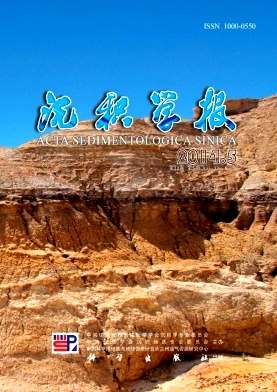|
[1]
|
李理, 钟大赉, 时秀朋. 鲁西隆起和济阳坳陷新生代隆坳耦合关系[J]. 地质学报, 2007, 81(9):1215-1225[Li Li, Zhong Dalai, Shi Xiupeng. Cenozoic uplifting/subsidence coupling between the west Shandong rise and the Jiyang depression, Northern China[J]. Acta Geologica Sinica, 2007, 81(9): 1215-1225] |
|
[2]
|
杨辉, 程军, 王宜昌. 重新认识东营凹陷的深层构造[J]. 石油地球物理勘探, 2005, 40(3):360-365[Yang Hui, Cheng Jun, Wang Yichang. Renewing knowledge of deep structures of Dongying depression[J]. Oil Geophysical Prospecting, 2005, 40(3): 360-365] |
|
[3]
|
任建业, 于建国, 张俊霞. 济阳坳陷深层构造及其对中新生代盆地发育的控制作用[J]. 地学前缘, 2009, 16(4):117-137[Ren Jianye, Yu Jianguo, Zhang Junxia. Structures of deep bed in Jiyang sag and their control over the development of Mesozoic and Cenozoic basins[J]. Earth Science Frontiers, 2009, 16(4): 117-137] |
|
[4]
|
贾红义, 于建国, 王金铎. 东营凹陷深层构造剖析及其地质意义[J]. 油气地球物理, 2007, 5(1):59-64[Jia Hongyi, Yu Jianguo, Wang Jinduo.The analysis and geologic significance of the deep structures in Dongying sag[J]. Petroleum Geophysics, 2007, 5(1): 59-64] |
|
[5]
|
贾红义, 于建国, 王金铎. 济阳坳陷深层构造层序划分[J]. 油气地球物理, 2007, 5(3):45-50[Jia Hongyi, Yu Jianguo, Wang Jinduo. Compartmentalization of deep structural sequence in Jiyang depression[J]. Petroleum Geophysics, 2007, 5(3): 45-50] |
|
[6]
|
王健, 操应长, 刘惠民, 等. 东营凹陷沙四下亚段沉积环境特征及沉积充填模式[J]. 沉积学报, 2012, 30(2):274-282[Wang Jian, Cao Yingchang, Liu Huimin, et al. Characteristics of sedimentary environment and filling model of the lower submember of the fourth member of Shahejie Formation, Dongying depression[J]. Acta Sedimentologica Sinica, 2012, 30(2): 274-282] |
|
[7]
|
姜华, 王建波, 张磊, 等. 南堡凹陷西南庄断层分段活动性及其对沉积的控制作用[J]. 沉积学报, 2010, 28(6):1047-1053[Jiang Hua, Wang Jianbo, Zhang Lei, et al. Segment activity of Xi'nanzhuang fault in Nanpu sag and its controlling on sedimentary process[J]. Acta Sedimentologica Sinica, 2010, 28(6): 1047-1053] |
|
[8]
|
刘震, 李运振, 赵阳, 等. 济阳坳陷古近系多级控砂机制分析[J]. 地质学报, 2007, 81(5):701-711[Liu Zhen, Li Yunzhen, Zhao Yang, et al. Analysis of multi grade controlling of formation and distribution on Paleogene sand bodies in the Jiyang depression, Bohai Bay Basin[J]. Acta Geologica Sinica, 2007, 81(5): 701-711] |
|
[9]
|
路智勇. 渤海湾盆地车镇凹陷古近系构造样式对沉积及储集层的影响[J]. 古地理学报, 2008, 10(3):276-285[Lu Zhiyong. Influence of the Paleogene structural styles on deposition and reservoir in Chezhen sag, Bohai Bay Basin[J]. Journal of Palaeogeography, 2008, 10(3): 276-285] |
|
[10]
|
李勤英, 罗凤芝, 苗翠芝. 断层活动速率研究方法及应用探讨[J]. 断块油气田, 2000, 7(2):14-17[Li Qinying, Luo Fengzhi, Miao Cuizhi. Research on fault activity ratio and its application[J]. Fault-Block Oil & Gas Field, 2000, 7(2): 14-17] |
|
[11]
|
王燮培. 石油勘探构造分析[M]. 北京:石油工业出版社, 1990:1-128[Wang Xiepei. Structural Analysis of Hydrocarbon Exploration[M]. Beijing: Petroleum Industry Press, 1990: 1-128] |
|
[12]
|
张善文, 隋风贵, 王永诗. 济阳坳陷下第三系陡岸沉积模式[J]. 沉积学报, 2001, 19(2):219-222[Zhang Shanwen, Sui Fenggui, Wang Yongshi. Depositional models on the steep slope of Paleogene, Jiyang Sub-basin[J]. Acta Sedimentologica Sinica, 2001, 19(2): 219-222] |
|
[13]
|
李桂范, 李建平, 王根照, 等. 渤中坳陷青东凹陷古近系沙三下亚段构造—古地貌对沉积的控制[J]. 石油与天然气地质, 2009, 30(4):425-430[Li Guifan, Li Jianping, Wang Genzhao, et al. Control of structure-paleogeomorphology on the deposition of the lower part of the third member of the Paleogene Shahejie Formation in the Qingdong sag of the Bozhong depression[J]. Oil & Gas Geology, 2009, 30(4): 425-430] |
|
[14]
|
陶晓风, 刘登忠, 朱利东. 陆相盆地沉积作用与构造作用的关系[J]. 沉积学报, 2001, 19(3):410-414[Tao Xiaofeng, Liu Dengzhong, Zhu Lidong. Relationship between sedimentary process in terrestrial basin and tectonic process[J]. Acta Sedimentologica Sinica, 2001, 19(3): 410-414] |
|
[15]
|
林畅松, 刘景彦, 胡博. 构造活动盆地沉积层序形成过程模拟——以断陷和前陆盆地为例[J]. 沉积学报, 2010, 28(5):868-874[Lin Changsong, Liu Jingyan, Hu Bo. Computer simulation on the formation of depositional sequences in tectonic active basin: Case study on rift and foreland basins[J]. Acta Sedimentologica Sinica, 2010, 28(5): 868-874] |
|
[16]
|
林畅松, 潘元林, 肖建新, 等. 构造坡折带——断陷盆地层序分析和油气预测的重要概念[J]. 地球科学, 2000, 25(3):260-265[Lin Changsong, Pan Yuanlin, Xiao Jianxin, et al. Structural slope-break zone: key concept for stratigraphic sequence analysis and petroleum forecasting in fault subsidence basins[J]. Earth Science, 2000, 25(3): 260-265] |
|
[17]
|
冯有良. 东营凹陷下第三系层序地层格架及盆地充填模式[J]. 地球科学, 1999, 24 (6):635-642[Feng Youliang. Lower Tertiary sequence stratigraphic framework and basin filling model in Dongying depression[J]. Earth Science, 1999, 24 (6): 635-642] |
|
[18]
|
孔凡仙. 东营凹陷北带砂砾岩扇体勘探技术与实践[J]. 石油学报, 2000, 21(5):27-31[Kong Fanxian. Exploration technique and practice of sandy-conglomeratic fans in the northern part of Dongying depression[J]. Acta Petrolei Sinica, 2000, 21(5): 27-31] |
|
[19]
|
操应长. 断陷湖盆中强制湖退沉积作用及其成因机制[J]. 沉积学报, 2005, 23(1):84-90[Cao Yingzhang. Sedimentation and its forming mechanism of the forced lacustrine regression in the rift lacustrine basin[J]. Acta Sedimentologica Sinica, 2005, 23(1): 84-90] |
|
[20]
|
Gawthorpe R L, Hurst J M. Transfer zones in extensional basins: their structural style and influence on drainage development and stratigraphy[J]. Journal of Geology Society, 1993, 150(6): 1137-1152 |
|
[21]
|
Withjack M O, Islam Q T, La Pointe P R. Normal faults and their hanging-wall deformation: an experimental study[J]. AAPG Bulletin, 1995, 79(1): 1-18 |






 DownLoad:
DownLoad: